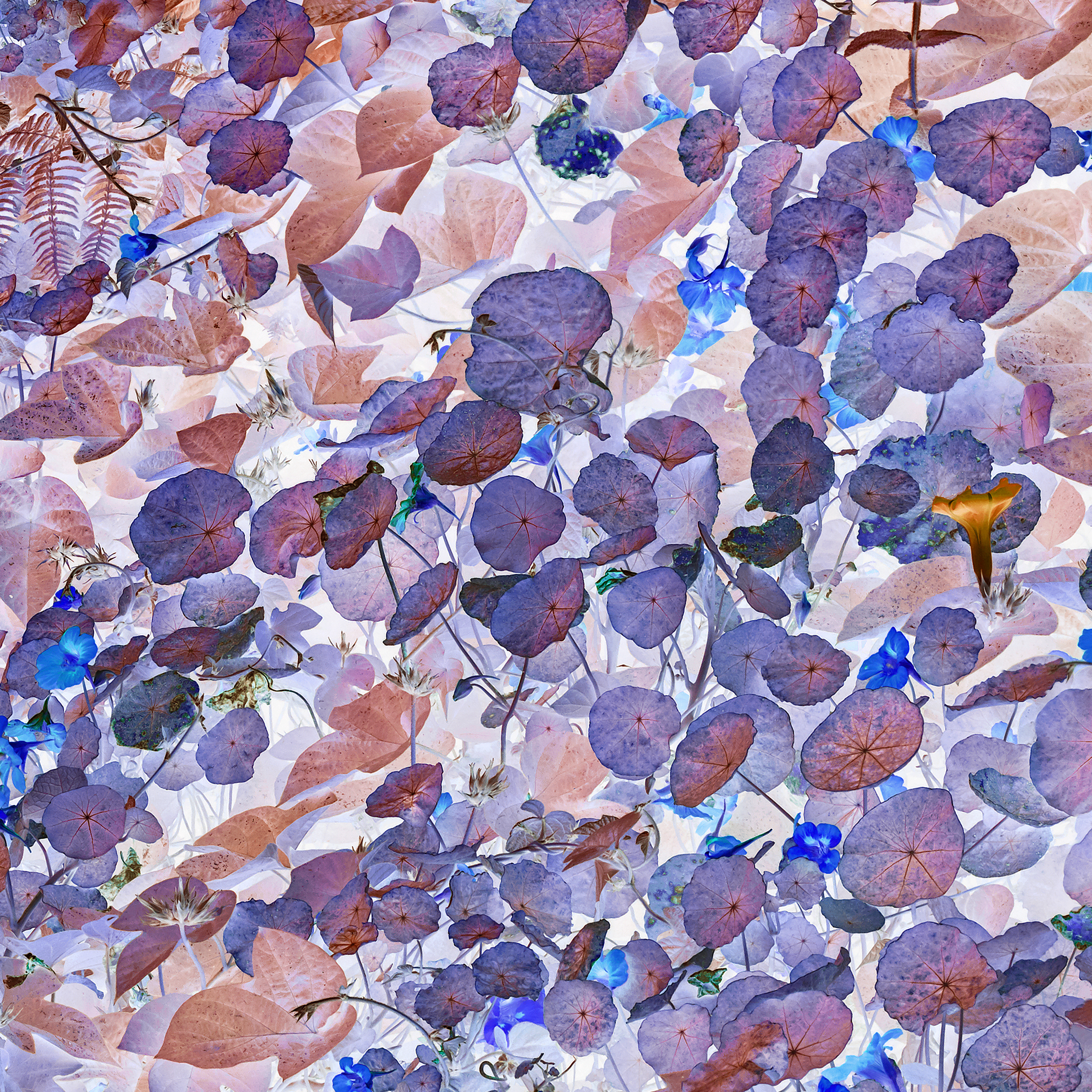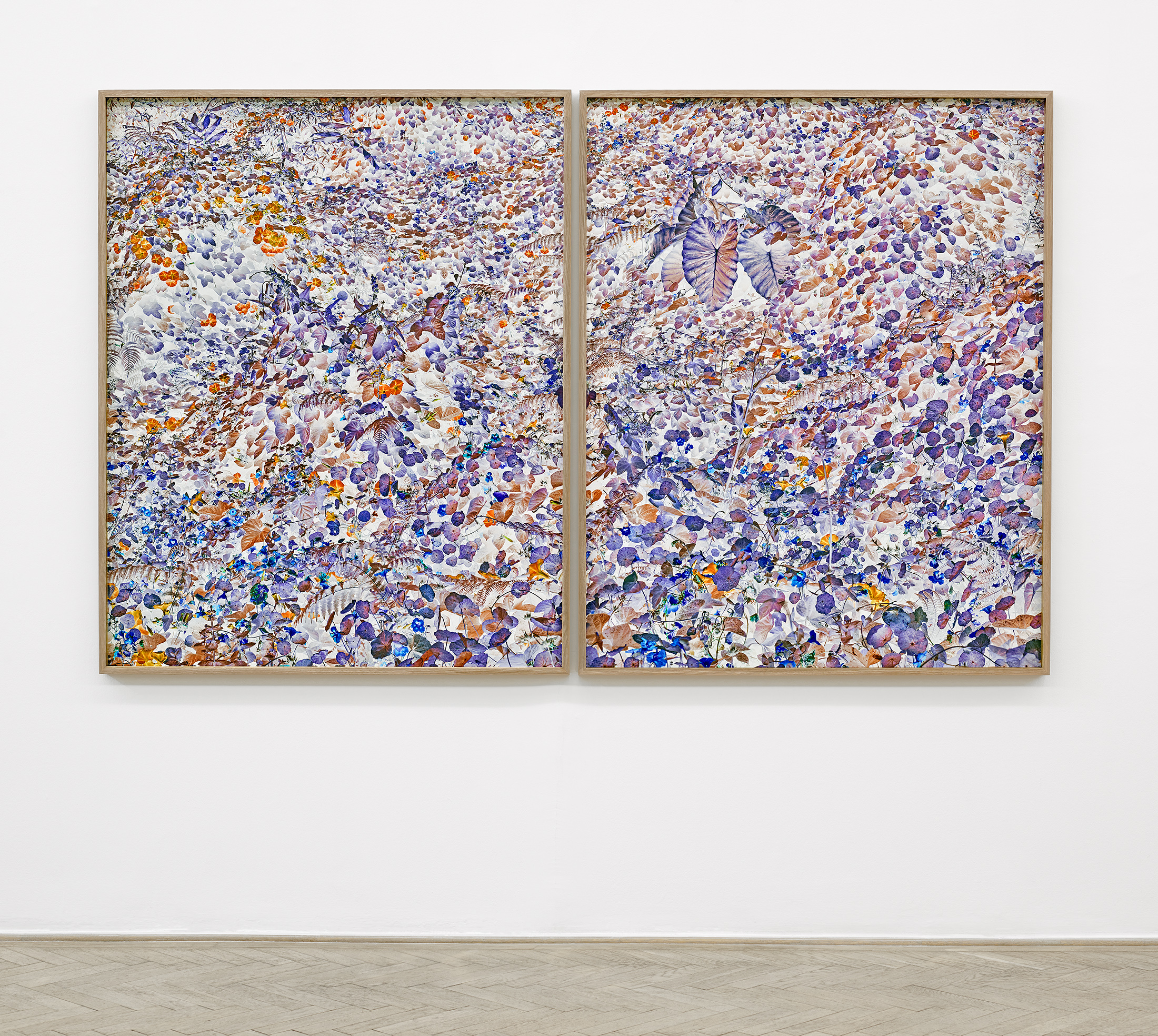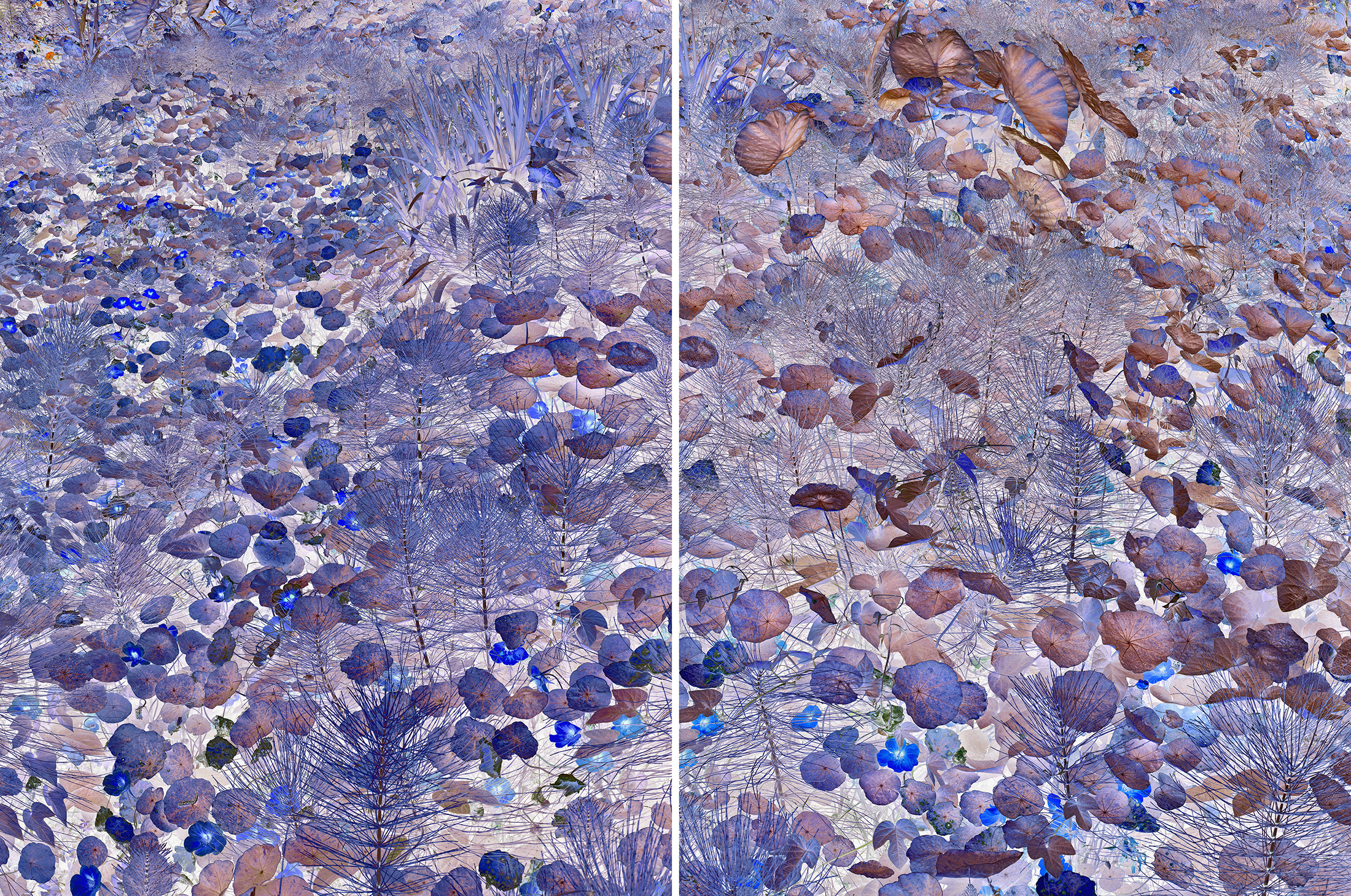Garden (afterimage)
2022
![]()
Garden (afterimage), 2022, archival pigment prints on Hahnemühle Photo Rag Baryta paper, diptych, 155 x 250 cm
A garden is a borderland between order characterizing a conquered space and a world beyond human control. It is simultaneously a symbol of nature’s perfection and our absolute power over the non-human. The diptych represents a garden “abandoned” several decades ago, which plants, having escaped the frame of human culture, cover with their characteristic rhizomatic expansive structure.
The work was inspired by the rhizomatic model, a fundamental metaphor of centerless thinking raised by post-anthropocentric theories, introduced by Gilles Deleuze and Félix Guattari in their book Mille Plateaux (1980). Rhizome, meaning a plant stem and originally known in botany, is characterized by non-linear, manifold connections which are different from the traditional hierarchical systems. According to the rhizome metaphor, the world functions in a proliferating, diverse and complex manner, whereby the different elements, be they ideas, cultures, social or natural systems, communicate with one another at countless points and no central power or narrative rules them. So the metaphor suggests that human thinking and ecological systems are parts of this proliferating, heterogeneous function, where an infinite network of connections and overlaps becomes a determining factor.
The diptych is the composition of two color negative photographs. The complementary colors thus visible correct our perceptive deficiencies deriving from being used to green plants, i.e. our “plant blindness”. They reveal the rhizomatic feature and radical otherness of vegetal existence. Inverted imaging is not only an aesthetic way of expression, but also an attempt to reinterpret our ways of seeing and our relationship to nature.
A garden is a borderland between order characterizing a conquered space and a world beyond human control. It is simultaneously a symbol of nature’s perfection and our absolute power over the non-human. The diptych represents a garden “abandoned” several decades ago, which plants, having escaped the frame of human culture, cover with their characteristic rhizomatic expansive structure.
The work was inspired by the rhizomatic model, a fundamental metaphor of centerless thinking raised by post-anthropocentric theories, introduced by Gilles Deleuze and Félix Guattari in their book Mille Plateaux (1980). Rhizome, meaning a plant stem and originally known in botany, is characterized by non-linear, manifold connections which are different from the traditional hierarchical systems. According to the rhizome metaphor, the world functions in a proliferating, diverse and complex manner, whereby the different elements, be they ideas, cultures, social or natural systems, communicate with one another at countless points and no central power or narrative rules them. So the metaphor suggests that human thinking and ecological systems are parts of this proliferating, heterogeneous function, where an infinite network of connections and overlaps becomes a determining factor.
The diptych is the composition of two color negative photographs. The complementary colors thus visible correct our perceptive deficiencies deriving from being used to green plants, i.e. our “plant blindness”. They reveal the rhizomatic feature and radical otherness of vegetal existence. Inverted imaging is not only an aesthetic way of expression, but also an attempt to reinterpret our ways of seeing and our relationship to nature.





